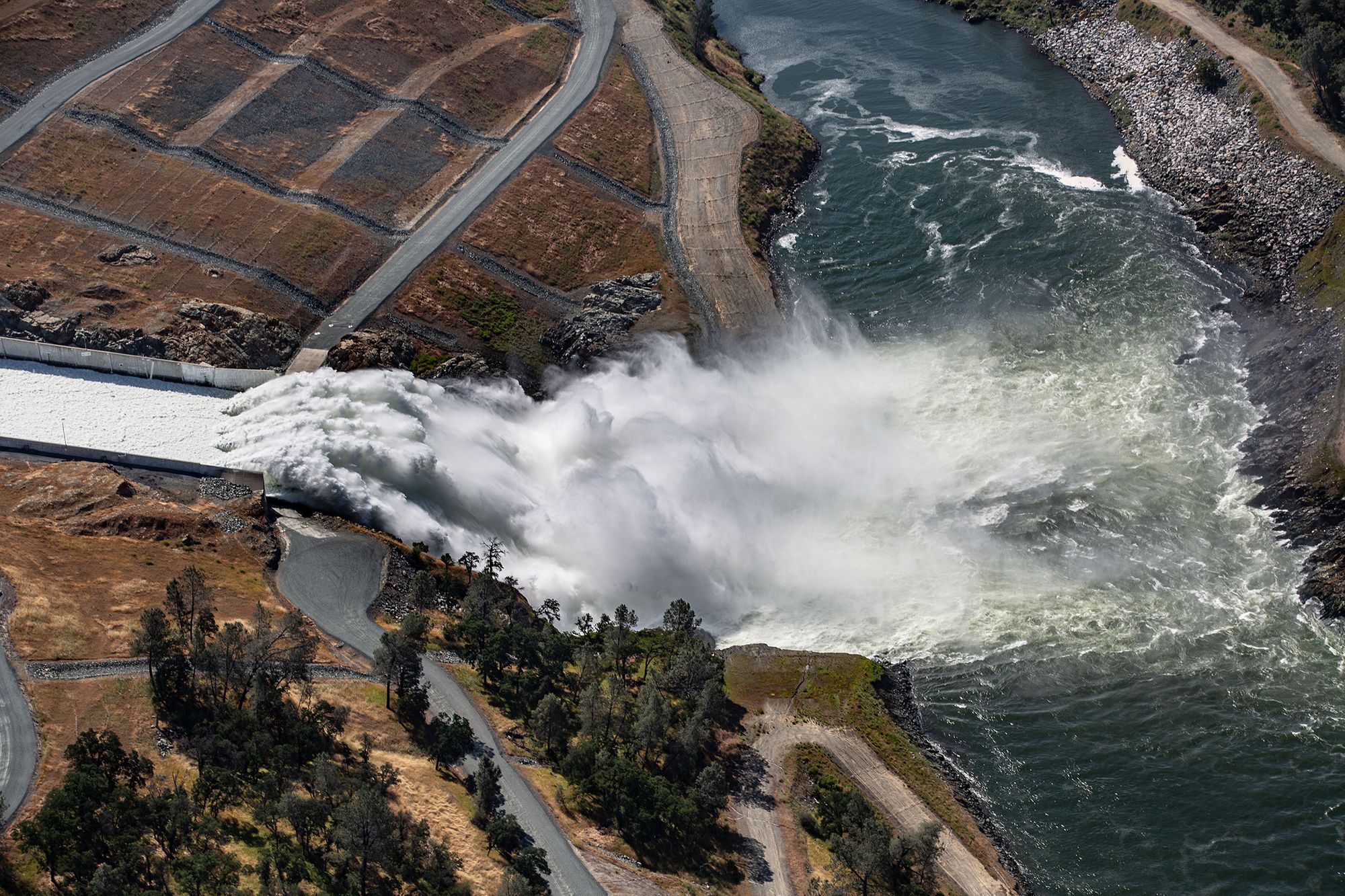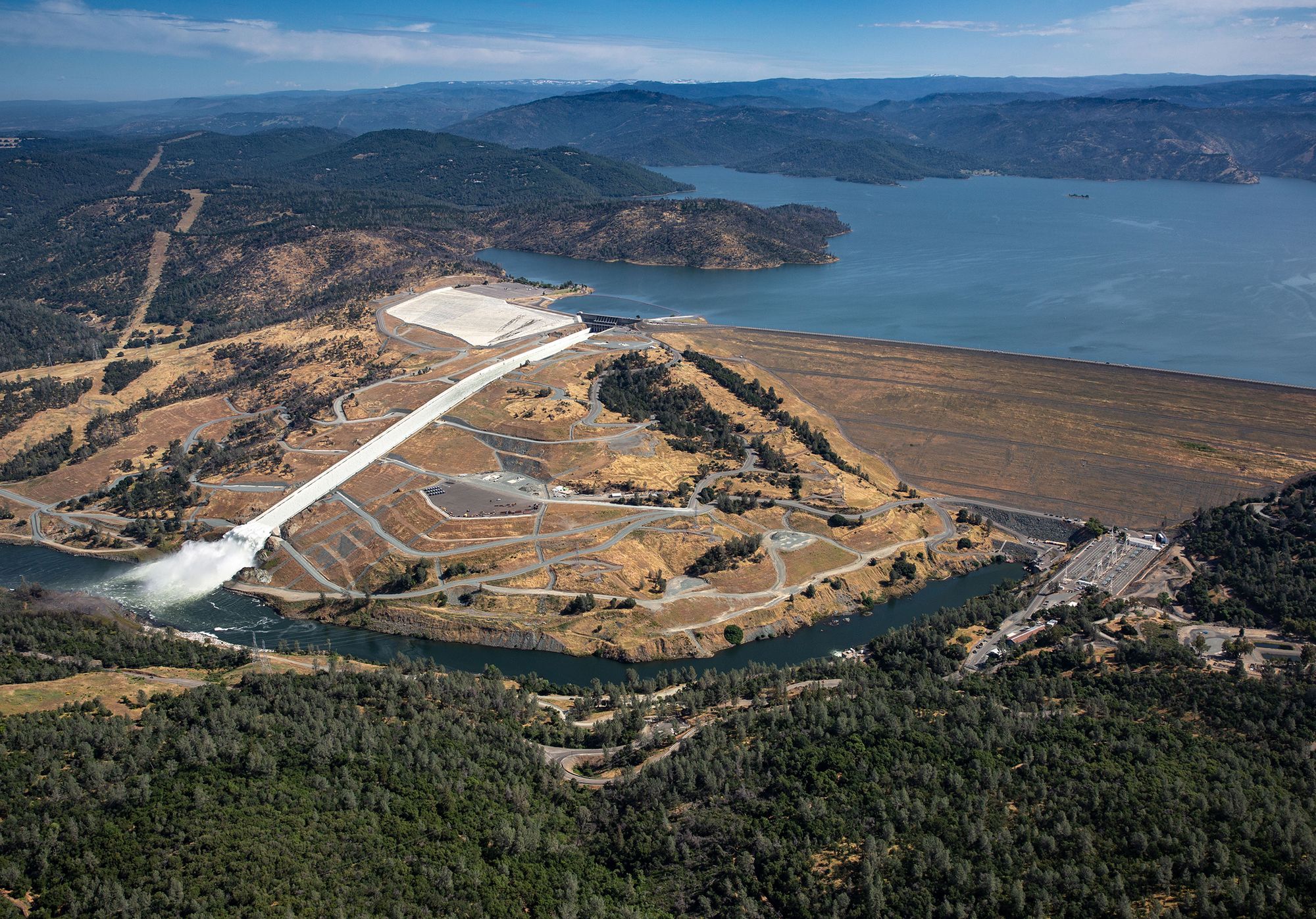The last time Lake Oroville neared capacity was four years ago, and very quickly it plunged into drought territory and has seen low water levels until this winter. And now that billion-dollar, renovated spillway is back in use as the reservoir is back at 99% of its capacity.
The Feather River is getting a fair amount of extra water flow these days as Lake Oroville has been releasing water over the last week. Oroville is California's second-largest reservoir, with a capacity of over 3.5 million acre-feet of water, and also just about at capacity is the state's largest reservoir, Lake Shasta, which has a capacity of 4.5 million acre-feet and is at 98%.
Lake Oroville supplies water to over 27 million Californians, and it's seen a lot of up-and-down "whiplash" over the last six years, as the Chronicle reports. It's sat at historically low levels the past few fall seasons, recovering only slightly during the winter and spring months. But we're back up to full capacity with more snowmelt on the way — and the spillway has been in regular use, as seen in the photos below.


That spillway, first built in the 1960s, sustained some heavy damage in the winter of 2016-2017, when releases of water began to cause widening cracks in its concrete. In late February 2017, this led to a brief crisis in which an emergency spillway next to it — essentially just a dirt berm — was put into use, and experts feared the entire dam might give way and threaten hundreds of thousands of people downstream, leading to a mass evacuation.
The regular spillway was used again, though damaged, a couple weeks later in March 2017, but the situation led to a billion-dollar emergency repair job that began in April, with a view toward having a functional spillway before the next rainy season.
Lake Shasta doesn't appear to have put its spillway at Shasta Dam into use yet, but that may be coming soon. As the Redding Record-Searchlight reported in March, the last time the spillway was used was in that same rainy winter in 2017, and prior to that, water hadn't flown through it in 19 years. Water from that spillway would flow out to the Sacramento River.
Lake Shasta was at 30% of capacity as recently as October.
In a June 2 blog post, the Department of Water Resources (DWR) said it "continues to closely monitor lake levels and will adjust releases accordingly to optimize operations for water storage and environmental protection while allowing for carryover storage into next year."
Elsewhere in the state, reservoirs are above average but not necessarily nearing capacity. As the Chronicle notes, though, Folsom Lake in the Sierra foothills is currently at 93% capacity and is likely in inch higher in the coming week.

